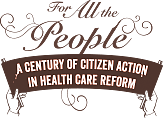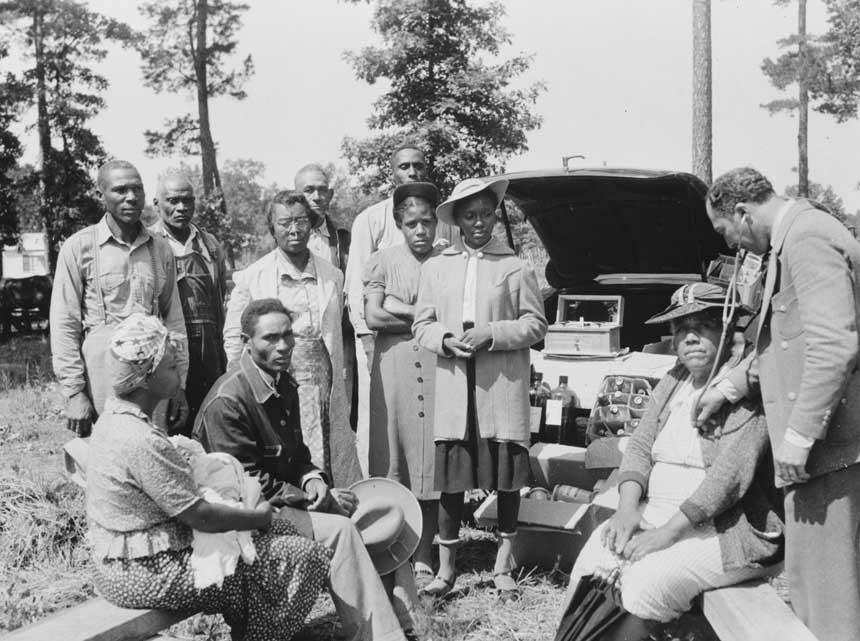Citizen groups worked with doctors and nurses to find ways to extend medical care to more people.
Starting in the 1920s, health care became more expensive, putting medical advances beyond the reach of many Americans. Attempts to establish a national system of insurance repeatedly failed, but activist citizens and health professionals worked to expand access by creating public health services, developing new types of coverage, and fighting hospital discrimination.
-
“Infancy and Maternity Care” and public health education are part of the planks presented by the National League of Women Voters during the 1920 Democratic Convention
Courtesy Collection of the Oakland Museum of California
Right after American women received the vote in 1920, women’s rights advocates briefly succeeded in winning government support for expanded public health nursing with the Sheppard-Towner Act (1921–29), the first federal program to assist babies and expectant mothers.
-
A nurse from the Henry Street Settlement with a Chinese family in the Bronx, New York, 1930s
Courtesy National Library of Medicine
The Henry Street Settlement Visiting Nurse Service on the Lower East Side of New York City, founded in 1895, charged patients fees based on their ability to pay, or provided care for free.
A doctor working for the Farm Security Administration medical cooperative examines a woman, Box Elder County, UT, 1940
Courtesy Library of Congress
During the Great Depression, the federal Farm Security Administration partnered with local communities to provide medical care through cooperatives, which later also became known as consumer-run health plans.
Families at Sabine Farms, a New Deal resettlement community for displaced tenant farmers near Marshall, TX, pooled their resources to employ a physician, Dr. Lee, 1939
Courtesy Library of Congress
Nurse Elise Cook and Dr. William MacColl show off the first babies born at Group Health Cooperative in Seattle, WA, 1947
Courtesy Group Health Cooperative
After federal involvement in medical cooperatives ended in the 1940s, many communities formed private non-profit health associations, often based on the principle of pre-paid group insurance.
Health plans like the Group Health Cooperative of Seattle, Washington, emphasized promoting wellness as much as treating illness.
-
Leonidas H. Berry, MD, prominent physician and president of the National Medical Association 1965–66, was a leader of campaigns against racial discrimination by hospitals.
Courtesy National Library of Medicine
Civil rights leaders and organizations fought to change racist policies and practices that limited access to health care for people of color.








